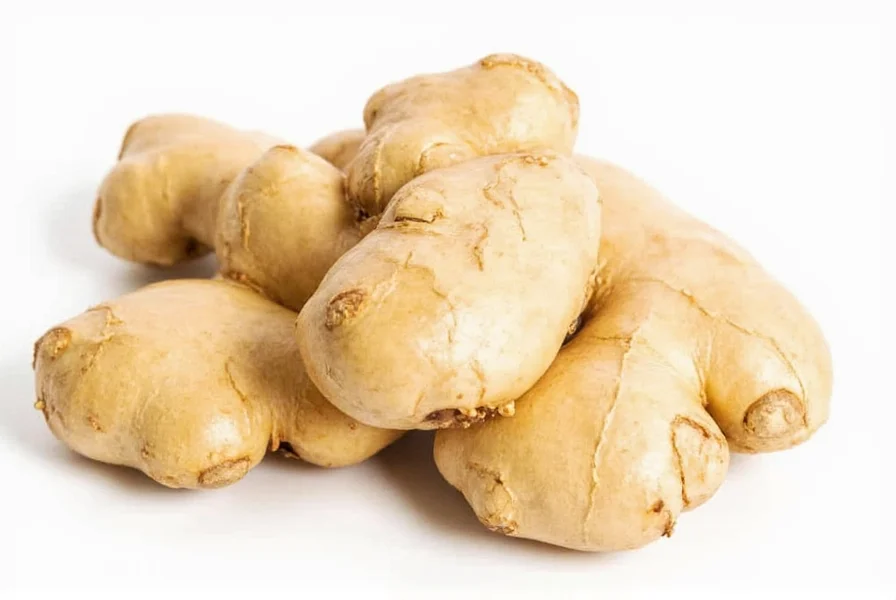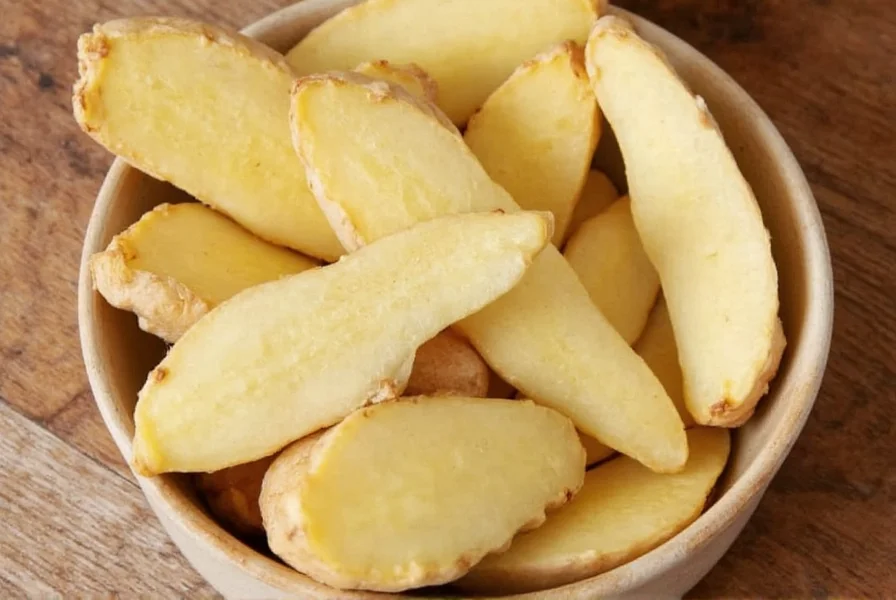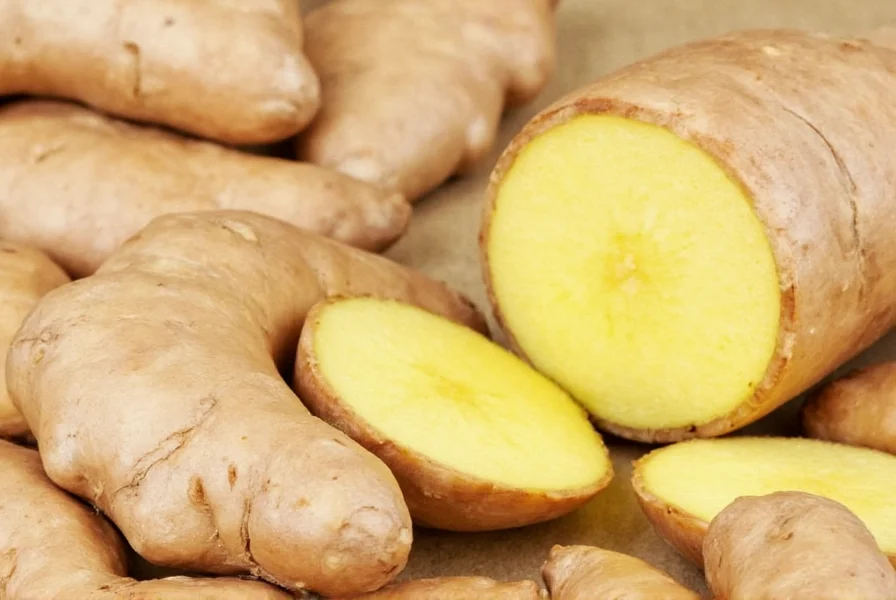Understanding how long ginger root remains fresh is essential for home cooks and health-conscious individuals who want to maximize this versatile root's benefits. Ginger's shelf life varies considerably based on storage methods, making proper handling crucial for maintaining its distinctive flavor, medicinal properties, and safety.
Factors That Affect Ginger Root Shelf Life
Ginger's longevity depends on several key factors that influence how quickly it deteriorates. The moisture content of your storage environment plays a critical role—too much humidity encourages mold growth, while excessive dryness causes ginger to shrivel prematurely. Temperature stability matters significantly, as fluctuating conditions accelerate spoilage. The initial freshness when purchased determines your starting point, with firm, plump roots naturally lasting longer than those already showing signs of aging. Whether the ginger remains whole or gets cut also impacts longevity, as exposed surfaces create entry points for bacteria and moisture loss.
Storage Methods and Expected Durations
Choosing the right storage method dramatically affects how long is ginger root good for in your kitchen. Each approach offers different trade-offs between convenience, space requirements, and shelf life extension.
| Storage Method | Expected Shelf Life | Best Practices |
|---|---|---|
| Room Temperature (Pantry) | 1-2 weeks | Store in a cool, dark place with good air circulation; keep away from direct sunlight |
| Refrigerator (Whole) | 3-4 weeks | Place in vegetable drawer without washing; wrap in paper towel inside perforated plastic bag |
| Refrigerator (Cut) | 1-2 weeks | Store in airtight container with minimal air exposure; change paper towel if damp |
| Freezer (Whole) | 5-6 months | Peel and cut into chunks; store in freezer bags with air removed |
| Freezer (Grated) | 6 months | Freeze grated ginger in ice cube trays with water; transfer to bags when solid |
| Pickled Ginger | 1-2 months | Store in vinegar solution in refrigerator; use sterilized containers |
How to Tell If Ginger Has Gone Bad
Recognizing spoiled ginger prevents potential foodborne illness and ensures you're using optimally flavorful ingredients. The most reliable indicators include:
- Texture changes: Fresh ginger should feel firm and solid. Soft spots, mushiness, or slimy surfaces indicate spoilage.
- Visual cues: Grayish discoloration beneath the skin, visible mold growth (white, green, or black spots), or excessive wrinkling beyond normal aging.
- Smell test: Spoiled ginger often develops a sour, musty, or fermented odor instead of its characteristic spicy, citrusy fragrance.
- Taste warning: If ginger tastes sour or unpleasant rather than spicy and warm, discard it immediately.
When evaluating how long is ginger root good for in your specific situation, remember that minor surface wrinkles don't necessarily indicate spoilage—peel away the outer layer to check the underlying flesh. However, any signs of mold or significant softening mean the ginger should be discarded.

Proven Methods to Extend Ginger's Shelf Life
Maximizing how long ginger root stays fresh requires proper handling from the moment you bring it home. Always select firm, smooth roots with tight skin and minimal wrinkles when purchasing. Avoid pre-cut ginger unless you plan to use it within days, as cut surfaces accelerate deterioration.
For refrigerator storage, the paper towel method proves most effective for maintaining optimal moisture levels. Place unwashed ginger in a resealable plastic bag with a dry paper towel to absorb excess moisture, then store in your vegetable crisper drawer. Replace the paper towel if it becomes damp to prevent mold growth.
Freezing represents the most effective long-term preservation method for how long is ginger root good for. Peel and cut ginger into 1-inch chunks before freezing in airtight containers or heavy-duty freezer bags. When needed, simply grate frozen ginger directly into dishes—no thawing required. This method preserves both flavor and nutritional compounds remarkably well.

Safety Considerations With Expired Ginger
Consuming spoiled ginger rarely causes serious illness but can lead to digestive discomfort. Moldy ginger may contain mycotoxins that could cause nausea or vomiting in sensitive individuals. Unlike some vegetables where you can cut away moldy portions, ginger's fibrous structure allows mold to penetrate deeper than visible, making it unsafe to salvage partially spoiled roots.
When ginger shows early signs of aging but remains safe to eat, consider using it in cooked applications rather than raw preparations. The heat from cooking helps eliminate potential surface bacteria while the stronger flavor profile of slightly aged ginger works well in soups, stews, and baked goods.
Practical Tips for Ginger Management
Implement these strategies to minimize waste and ensure you always have fresh ginger available:
- Buy smaller quantities more frequently rather than large amounts that may spoil
- Store ginger away from strong-smelling foods as it readily absorbs odors
- Keep ginger in its original skin until ready to use to maximize shelf life
- Consider growing your own ginger plant for continuous fresh supply
- Freeze ginger in recipe-sized portions for convenient cooking
Understanding how long is ginger root good for under various conditions transforms this common kitchen staple from a frequently wasted ingredient into a reliably available component of your culinary repertoire. Proper storage techniques not only extend ginger's usability but also preserve its distinctive flavor compounds and beneficial phytochemicals.
Frequently Asked Questions
Can you eat ginger that has turned slightly gray inside?
Gray discoloration inside ginger usually indicates oxidation rather than spoilage. If the texture remains firm and the smell is normal, it's generally safe to eat after peeling away the discolored portions. However, if accompanied by softness or sour odor, discard the ginger.
How long does ginger last after being cut?
Cut ginger typically remains fresh for 1-2 weeks when properly stored in an airtight container in the refrigerator. Always pat cut surfaces dry before storing and replace any moisture-absorbing paper towels if they become damp to prevent mold growth.
Does freezing ginger affect its medicinal properties?
Freezing preserves ginger's beneficial compounds effectively. Studies show that frozen ginger retains nearly all of its gingerol content (the primary active compound) for up to six months. The freezing process may even increase certain antioxidant properties by breaking down cell walls and making compounds more bioavailable.
What's the best way to store ginger for tea preparation?
For tea, freeze peeled ginger in 1-inch chunks. When needed, simply drop a frozen piece into boiling water. This method preserves freshness for months while providing convenient, ready-to-use portions. Alternatively, store whole ginger in the refrigerator and slice thin pieces as needed, which should remain fresh for 3-4 weeks.
Can you revive dried-out ginger root?
Slightly dried ginger can often be revived by soaking in cold water for 30-60 minutes. However, if the ginger has become extremely hard, shriveled, or developed soft spots, it's best to discard it. For cooking purposes, dried-out ginger works well when grated directly into dishes where moisture content matters less.











 浙公网安备
33010002000092号
浙公网安备
33010002000092号 浙B2-20120091-4
浙B2-20120091-4